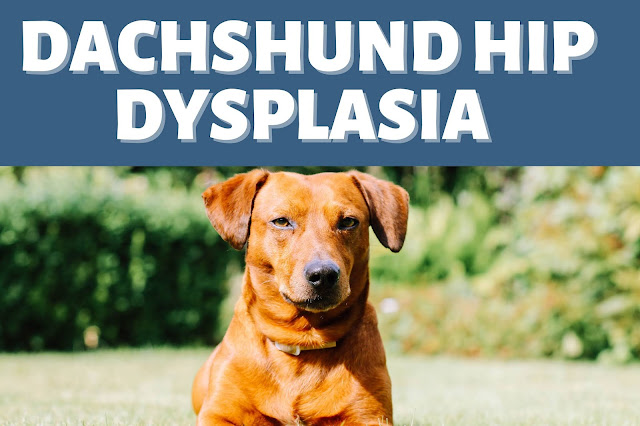Dachshund Hip Dysplasia
Dachshund Hip dysplasia in canines is a typical formative condition in enormous and goliath breed canines like German shepherds, Rottweilers, brilliant retrievers, Saint Bernards, Labrador retrievers, and Newfoundlands. It's brought about by a hip deformation that outcomes in joint laxity, or detachment, and can prompt torment, portability issues, and osteoarthritis. However the condition is available since early on, many canines won't give clinical indications until they're more established. Notwithstanding, evaluating your pet for hip dysplasia almost immediately can offer you a chance to treat the disfigured joint before it creates issues.
What is Hip Dysplasia?
Canine hip dysplasia happens when a canine's hip joint doesn't create as it ought to. The hip is a ball-and-attachment joint, and in the event that the two parts don't develop at a similar rate, it can bring about an exceptionally free, unsound joint.
This may not seem like no joking matter, however as per the American College of Veterinary Surgeons, hip dysplasia in canines can lead to difficult issues. At the point when a canine maneuvers around with a free hip joint, it can make super durable harm the joint's life structures. Assuming left untreated, the condition can transform into osteoarthritis (likewise called degenerative joint sickness), as the strange development erodes ligament and prompts the arrangement of scar tissue and bone spikes.
Hereditary qualities assumes a focal part in the improvement of canine hip dysplasia, as canines can pass the condition to their posterity, and huge variety canines are more inclined to the infection. In any case, it isn't the main danger factor. Pups with a hereditary inclination for hip dysplasia are more in danger of fostering the condition in case they're given more food than they need, coming about in quicker than ordinary weight gain and development. Weighty exercise is another danger factor in little dogs.
How is Hip Dysplasia Diagnosed?
However the signs recorded above can highlight hip dysplasia, the condition is typically analyzed through hip x-beams in both youthful and grown-up canines, says Sarah Kirkwood, DVM, of Kansas City Veterinary Care in Kansas City, Mo. Your veterinarian may likewise utilize their hands to inspect the hip and check for detachment.
What is the Treatment for Hip Dysplasia?
"There are numerous choices accessible for treating hip dysplasia," Kirkwood says, "and the best treatment relies upon the age, condition, and way of life of the canine." She regularly suggests a medical procedure for youthful canines with long, dynamic lives ahead, as it gives the most long haul solace. Two normal careful choices for canines with hip dysplasia are complete hip substitution and femoral head ostectomy, in which the head and neck of the femur are eliminated.
For more seasoned canines and canines for whom medical procedure isn't a choice, Kirkwood says clinical administration at home can successfully oversee torment. "The most generally utilized prescriptions to assist with joint torment from hip dysplasia are nonsteroidal calming drugs (NSAIDs)," she clarifies. Nonetheless, it's imperative to take note of that NSAIDs can have huge incidental effects and should be firmly observed. "Supplements like glucosamine and chondroitin can assist with forestalling ligament breakdown in the joint, which can ease torment too," Kirkwood adds.
Other potential medicines incorporate cold laser treatment, needle therapy, and active recuperation. Your veterinarian will work with you to decide the most ideal choices for yourself as well as your pet.
How Could Hip Dysplasia in Dogs Be Prevented?
"One method for dialing back the movement of the results of hip dysplasia is to keep your pet at a sound weight, particularly when he's young," Kirkwood says. "You can likewise have your canine evaluated for the condition at a youthful age utilizing hip x-beams. These radiographs can assist you with deciding how reasonable it is your canine will have issues later on and regardless of whether you need to think about early careful mediation."
As indicated by Kirkwood, hip dysplasia commonly doesn't influence a wretched existence hope, however it can. "In case a canine turns out to be entirely excruciating, to the point that [he] no longer needs to get up and stroll around," she clarifies, "it tends to be truly challenging to keep a decent personal satisfaction—particularly since most canines who experience the ill effects of the condition are enormous varieties."
In case you have an enormous variety canine of all ages, don't stop for a second to get some information about the dangers and indications of hip dysplasia. A veterinarian who knows your pet and can inspect him in person is in the best situation to offer data and guidance.
